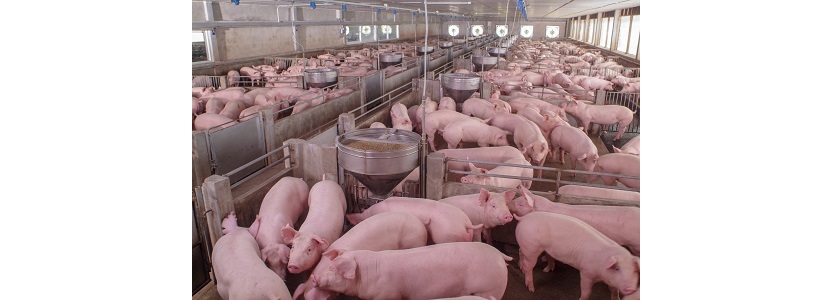Dietary inclusion of high oleic soybean oil for fattening pigs, has been shown to improve growth performance and dorsal fat thickness.
Introduction
Feeding fattening pigs a fat supplement is a common practice in the pig sector and can result in improved feed efficiency and reduced intake; however, dietary lipids also play a key role in determining the composition of pork.
High oleic soybean oil is a potential source of fat for pig diets due to its high oleic acid content, considering that it is the one that most influences the quality of fat.
Study objectives
The objectives of the present study were to evaluate the effects of the inclusion of different levels of high oleic soybean oil on growth performance and carcass characteristics.
Materials and Methods
- A total of 288 pigs raised in two separate blocks were allocated to four diets with: 25% dry distillers grains with solubles (DDGS), 2%, 4% or 6% high oleic soybean oil.
- The pigs were fed for 98 days using a three-phase feeding system. They were individually weighed and food consumption was recorded throughout the study to calculate average daily consumption and feed efficiency.
- A total of 144 pig channels were sent to the laboratory, from which primary and cutting cuts were obtained to calculate the yield of the carcass.
Results and Discussion
- Differences in growth yield were observed, as pigs fed DDGS showed higher average daily feed consumption, consuming 0.21, 0.18 and 0.28 kg/d more compared to pigs fed 2%, 4% and 6% high oleic soybean oil, respectively.
- Pigs fed 6% high oleic soybean oil obtained higher feed efficiency compared to pigs fed DDGS and 2% oleic soybean oil, but were no different from pigs fed 4% high oleic soybean oil. In addition, differences in the characteristics of the channel were observed.
- Hot carcass weight increased in pigs fed 6% high oleic soybean oil compared to pigs fed DDGS and 2% high oleic soybean oil, while pigs fed 4% high oleic soybean oil were no different from either extreme.
- On the other hand, pigs fed 4% and 6% high oleic soybean oil produced fatter carcasses with a reduction in lean.
- Overall, pigs fed 2% high oleic soybean oil had a lower average daily intake, with a dorsal and lean carcass fat thickness similar to pigs fed DDGS.
- However, pigs fed 4% and 6% high oleic soybean oil not only improved average daily consumption and feed efficiency, but also increased dorsal fat thickness.
Conclusion
From the obtained results researchers established that dietary inclusion of high oleic soybean oil represents a feasible alternative for improving growth performance and dorsal fat thickness in fattening pigs. High oleic soybean oil presents itself as a reliable source of dietary fat due to its high oleic acid content, considering that this type of fatty acid has one of the greatest influences over fat quality.
Source: Abstract taken from “Effects of feeding high oleic soybean oil to growing-finishing pigs on growth performance and carcass characteristics.” Journal of Animal Science. 2022
